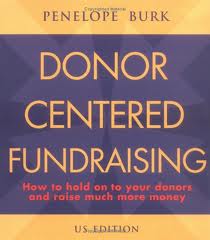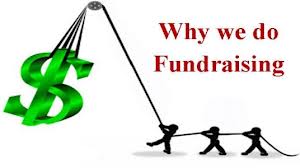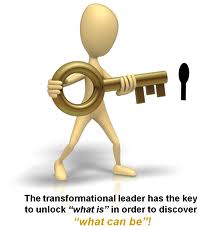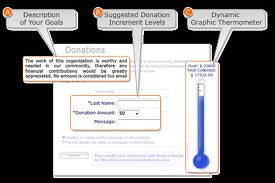 Last week I was out with a friend for a glass of wine after work. We hadn’t seen each other in a few months, and we were catching up on lost time. “How are you? How is the new job? How’s your wife? Kids? Grandkids?” You know the drill. It was during this exchange that he dropped the bomb: “So, how is your partner? Ya know … the only time I ever see him is when he is asking me for a donation.”
Last week I was out with a friend for a glass of wine after work. We hadn’t seen each other in a few months, and we were catching up on lost time. “How are you? How is the new job? How’s your wife? Kids? Grandkids?” You know the drill. It was during this exchange that he dropped the bomb: “So, how is your partner? Ya know … the only time I ever see him is when he is asking me for a donation.”
I’ve been doing non-profit work for a long time now, and I’ve trained myself to recognize this for what it is worth. Whenever I hear donors say something like this, I immediately think of it as a cry for help. It is a donor who is screaming for attention. They want to know:
- Was my contribution appreciated?
- Is my contribution being put to work in the manner in which I was told it would be during the solicitation visit?
- Is my contribution making an impact?
This is classic Penelope Burk stuff right out of her book “Donor Centered Fundraising“.
 What does your donor communication program look like? Does it include:
What does your donor communication program look like? Does it include:
- newsletters
- bulk email / eNewsletters
- annual reports
- impact bulletins
- computer generated gift acknowledgement letters
- handwritten letters
- donor recognition societies (featuring stewardship activities)
- donor receptions
- donor surveys and focus groups
I suspect many of you utilize some of these best practices, but are you missing the most powerful and simple stewardship activity of them all? My gut feeling tells me that the answer to this question is probably ‘YES’.
If you are using a “prospect assignment process” that allows you to pair prospects with volunteer solicitors who they know well, then you need to take it one step further and design a stewardship program around those relationships.
You should not assume that two people who know each other fairly well don’t lose touch with each other. It happens all the time. Take a moment to mentally review everyone in your life with whom you own a phone call, email or letter. I bet that list is longer than you originally thought.
If you want to improve your donor loyalty rate (and stop losing donors for silly reasons), then I suggest you do these two simple things:
- Amend your written volunteer solicitor job description to include one more task that includes two personal touches (e.g. phone call or sit-down meeting). The first conversation is a simple touch focused on saying thank you and updating them on how their contribution is being used. The second touch is equally as simple with a reiterated message of appreciation and an update on how their contribution is having an impact.
- Develop a tickler system and poke your volunteers when it is time to make these two calls. We’re all busy, and reminders are necessary. You shouldn’t expect your volunteer solicitors to remember when stewardship calls should be made.
 These personal touches do not have to be all about your non-profit organization. I suggest that you train your volunteers to be less obvious. For example, both stewardship touches could be as simple as three minutes worth of messaging in the middle of a lunch meeting or after-work cocktail. It should feel organic and nature. It shouldn’t feel forced or contrived.
These personal touches do not have to be all about your non-profit organization. I suggest that you train your volunteers to be less obvious. For example, both stewardship touches could be as simple as three minutes worth of messaging in the middle of a lunch meeting or after-work cocktail. It should feel organic and nature. It shouldn’t feel forced or contrived.
Making these additions to your donor communication program will likely improve your donor loyalty rates, but it should also help your volunteers become better solicitors . . . less reluctant and more confident.
If there is one thing I hear all of the time from volunteers, it is how fearful they are with “over-soliciting” their friends for charitable gifts. I believe this is rooted in the fact that volunteers aren’t involved in the stewardship process. So, they have doubts that the right things are being done in between solicitation calls to demonstrate return on investment.
So why not involve them?
Oh yeah . . . there is one more added benefit to adding these tactics to your stewardship plan. You end up stewarding your volunteer solicitors at the same time because you are providing them updates to share with their friends and your donors.
Does your agency have something like this folded into its stewardship program (e.g. Moves Management)? If so, how well does it work for you? Have you tracked your success? What was the impact on your retention rates? What were your challenges and how did you overcome them? Please use the comment box below to share your thoughts and experiences. We can all learn from each other.
By the way, my partner is a subscriber to this blog. So, my shout out to him is: “I think you should reach out to you-know-who and schedule time to catch up over a glass of bourbon.” 😉
Here’s to your health!
Erik Anderson
Founder & President, The Healthy Non-Profit LLC
www.thehealthynonprofit.com
erik@thehealthynonprofit.com
http://twitter.com/#!/eanderson847
http://www.facebook.com/eanderson847
http://www.linkedin.com/in/erikanderson847

 Welcome to O.D. Fridays at DonorDreams blog. Every Friday for the foreseeable future we will be looking at posts from John Greco’s blog called “
Welcome to O.D. Fridays at DonorDreams blog. Every Friday for the foreseeable future we will be looking at posts from John Greco’s blog called “ If I’ve seen it once, I’ve seen it hundreds of times. And I bet you have, too. I will omit the names to protect the innocent.
If I’ve seen it once, I’ve seen it hundreds of times. And I bet you have, too. I will omit the names to protect the innocent. We’ve also all seen this situation.
We’ve also all seen this situation. A non-profit organization that doesn’t invest time and resources into evaluation and critique is akin to an ostrich sticking its head in the sand.
A non-profit organization that doesn’t invest time and resources into evaluation and critique is akin to an ostrich sticking its head in the sand. Welcome to part four of our five part series on Governance. We have already discussed the Board’s role in
Welcome to part four of our five part series on Governance. We have already discussed the Board’s role in 
 Welcome to O.D. Fridays at DonorDreams blog. Every Friday for the foreseeable future we will be looking at posts from John Greco’s blog called “
Welcome to O.D. Fridays at DonorDreams blog. Every Friday for the foreseeable future we will be looking at posts from John Greco’s blog called “ I find this distinction really fascinating, and I haven’t been able to stop thinking about it since I read this post. So, I’ve been focused on identifying some non-profit related “predicaments” and here is what I’ve come up with . . .
I find this distinction really fascinating, and I haven’t been able to stop thinking about it since I read this post. So, I’ve been focused on identifying some non-profit related “predicaments” and here is what I’ve come up with . . . Recently, I’ve been doing a lot of what I consider “Nonprofit 101” trainings focused on board roles and responsibilities. After talking with board members about their fiduciary responsibilities, they often push back on their role in fundraising. I’m becoming really good at giving them the “sympathetic smile,” which communicates that I’m hearing their fear but not giving them permission to wash their hands of their role in resource development.
Recently, I’ve been doing a lot of what I consider “Nonprofit 101” trainings focused on board roles and responsibilities. After talking with board members about their fiduciary responsibilities, they often push back on their role in fundraising. I’m becoming really good at giving them the “sympathetic smile,” which communicates that I’m hearing their fear but not giving them permission to wash their hands of their role in resource development. After all, how scary can it be to “tell stories,” right?
After all, how scary can it be to “tell stories,” right? Welcome to O.D. Fridays at DonorDreams blog. Every Friday for the foreseeable future we will be looking at posts from John Greco’s blog called “
Welcome to O.D. Fridays at DonorDreams blog. Every Friday for the foreseeable future we will be looking at posts from John Greco’s blog called “ Well, huh? Let me see here. Every good planning process begins with an assessment /evaluation which springboards off into goal setting, strategy development and action planning. If the organization I just referenced hadn’t been so “foolishly consistent,” they would’ve seen the following:
Well, huh? Let me see here. Every good planning process begins with an assessment /evaluation which springboards off into goal setting, strategy development and action planning. If the organization I just referenced hadn’t been so “foolishly consistent,” they would’ve seen the following: The board members and executive director of the agency I reference in the example above certainly were “little“. I say this because their “foolish consistency” and unwillingness to do any assessment and planning had locked them into being a certain size. When you looked at their agency budget, they had brought in the same amount of revenue for the last 10 years.
The board members and executive director of the agency I reference in the example above certainly were “little“. I say this because their “foolish consistency” and unwillingness to do any assessment and planning had locked them into being a certain size. When you looked at their agency budget, they had brought in the same amount of revenue for the last 10 years.
 There are exceptions to my general rule of “no selling”. The Girl Scouts and Boy Scouts sell cookies and popcorn very well. Their troops, which are volunteer-led, rely on those sales for most of their troop activities. Good for them! There are also
There are exceptions to my general rule of “no selling”. The Girl Scouts and Boy Scouts sell cookies and popcorn very well. Their troops, which are volunteer-led, rely on those sales for most of their troop activities. Good for them! There are also
 I am of the opinion that those of us who still use the economy to explain our shortcomings are simply making excuses. In fact, let me take it a step further. Invoking the economy to explain your poor fundraising performance is nothing short of excuse making.
I am of the opinion that those of us who still use the economy to explain our shortcomings are simply making excuses. In fact, let me take it a step further. Invoking the economy to explain your poor fundraising performance is nothing short of excuse making. Empathize . . . they are grieving the lack of results from their collective efforts
Empathize . . . they are grieving the lack of results from their collective efforts Jeff Bezos has been on my mind lately. Of course, he is the 49-year-old owner of Amazon.com, and this internet pioneer recently purchased one of the iconic old media newspapers — The Washington Post — for $250 million. It was no more than a few days after this announcement that I was talking to a non-profit board volunteer about fundraising when I was reminded of this famous Jeff Bazos quotation: “A company shouldn’t get addicted to being shiny, because shiny doesn’t last.”
Jeff Bezos has been on my mind lately. Of course, he is the 49-year-old owner of Amazon.com, and this internet pioneer recently purchased one of the iconic old media newspapers — The Washington Post — for $250 million. It was no more than a few days after this announcement that I was talking to a non-profit board volunteer about fundraising when I was reminded of this famous Jeff Bazos quotation: “A company shouldn’t get addicted to being shiny, because shiny doesn’t last.” I am a huge proponent of using technology and integrating it into your non-profit organization’s fundraising program, but it shouldn’t be introduced in a way that undercuts the other best practices embedded in your resource development plan.
I am a huge proponent of using technology and integrating it into your non-profit organization’s fundraising program, but it shouldn’t be introduced in a way that undercuts the other best practices embedded in your resource development plan. More than a year ago, I stumbled upon a fun article published in the Stanford Social Innovation Review (SSIR) titled “
More than a year ago, I stumbled upon a fun article published in the Stanford Social Innovation Review (SSIR) titled “ So, the conversations I’ve been referencing throughout this post have to do with board development and not the actual revenue models.
So, the conversations I’ve been referencing throughout this post have to do with board development and not the actual revenue models.